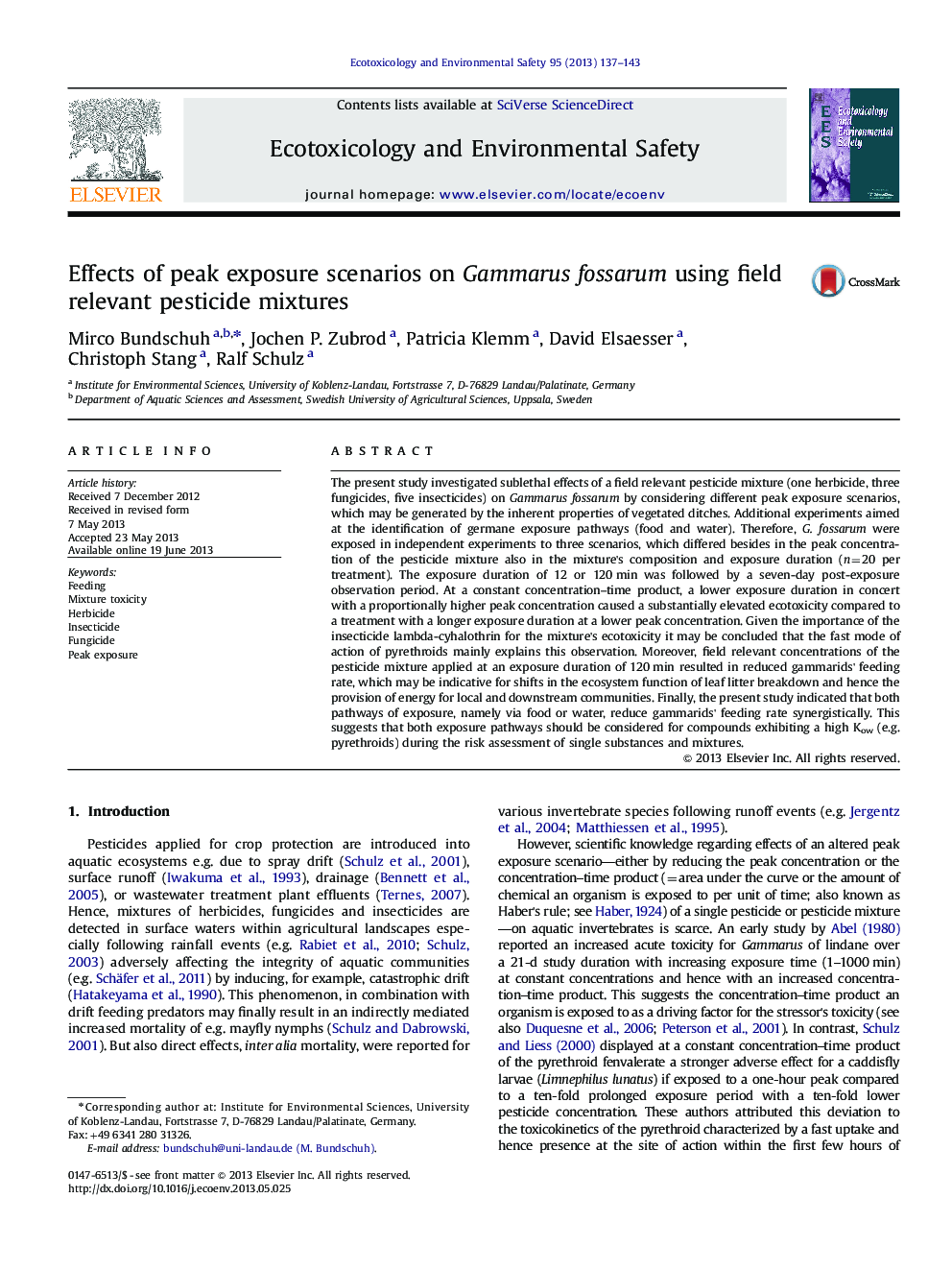| Article ID | Journal | Published Year | Pages | File Type |
|---|---|---|---|---|
| 4420351 | Ecotoxicology and Environmental Safety | 2013 | 7 Pages |
•Pesticide mixture at field-relevant concentrations indicates impairments in leaf breakdown.•Constant concentration–time product may be insufficient to explain toxicity.•Sorptive compounds may cause toxicity via both exposure pathways (food and water).
The present study investigated sublethal effects of a field relevant pesticide mixture (one herbicide, three fungicides, five insecticides) on Gammarus fossarum by considering different peak exposure scenarios, which may be generated by the inherent properties of vegetated ditches. Additional experiments aimed at the identification of germane exposure pathways (food and water). Therefore, G. fossarum were exposed in independent experiments to three scenarios, which differed besides in the peak concentration of the pesticide mixture also in the mixture's composition and exposure duration (n=20 per treatment). The exposure duration of 12 or 120 min was followed by a seven-day post-exposure observation period. At a constant concentration–time product, a lower exposure duration in concert with a proportionally higher peak concentration caused a substantially elevated ecotoxicity compared to a treatment with a longer exposure duration at a lower peak concentration. Given the importance of the insecticide lambda-cyhalothrin for the mixture's ecotoxicity it may be concluded that the fast mode of action of pyrethroids mainly explains this observation. Moreover, field relevant concentrations of the pesticide mixture applied at an exposure duration of 120 min resulted in reduced gammarids' feeding rate, which may be indicative for shifts in the ecosystem function of leaf litter breakdown and hence the provision of energy for local and downstream communities. Finally, the present study indicated that both pathways of exposure, namely via food or water, reduce gammarids' feeding rate synergistically. This suggests that both exposure pathways should be considered for compounds exhibiting a high Kow (e.g. pyrethroids) during the risk assessment of single substances and mixtures.
